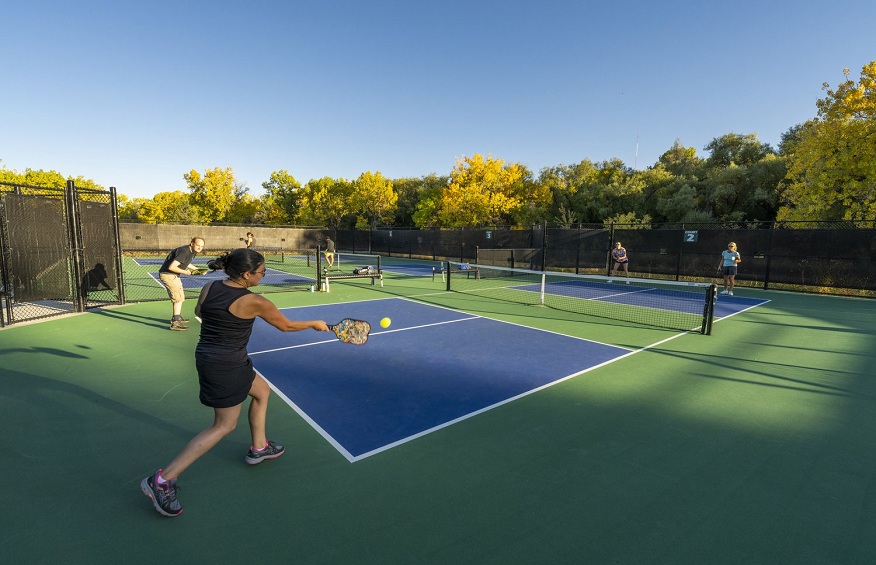Constructing a pickleball court requires precision and careful planning. One of the most critical aspects is pouring the concrete for the court surface. In this comprehensive guide, we will walk you through the steps and best practices for pouring concrete for a pickleball court. Whether you are a homeowner creating your private court or a community looking to build public courts, understanding the process is vital to ensure a top-notch playing surface.
Selecting the Ideal Location
Before you begin pouring concrete, it’s essential to choose the right location for your pickleball court. Consider these factors:
- Sunlight: Opt for a location that gets ample sunlight throughout the day to keep the court dry and free from debris.
- Drainage: Ensure proper drainage to prevent water from accumulating on the court.
- Accessibility: The court should be easily accessible to players and spectators.
Creating a Detailed Plan
A well-thought-out plan is crucial for a successful project. Here are the steps you should follow:
- Site Preparation: Clear the area of any obstacles, rocks, or debris. Mark the court’s dimensions using string lines and stakes.
- Excavation: Dig to a depth of 4 inches for the concrete slab. Remove any roots, rocks, or organic matter.
- Formwork: Build sturdy formwork using wooden boards to outline the court’s shape. Ensure the forms are level and properly secured.
- Reinforcement: Install a mesh or rebar grid within the excavation to add strength to the concrete slab.
Mixing and Pouring Concrete
Proper concrete mixing and pouring are essential for a smooth, even playing surface.
- Concrete Mix: Use a mix specifically designed for outdoor sports surfaces. This mix provides durability and the right texture for pickleball.
- Pouring: Pour the concrete evenly over the court area. Distribute it with shovels and screed it to the desired height. Ensure that the concrete is level and without low spots.
- Finishing: Once the concrete is poured, use a trowel to smooth the surface and create the desired texture. Add curing compound to protect the concrete as it dries.
- Curing Time: Allow the concrete to cure for at least seven days. Keep it moist during this period to prevent cracking.
Read More: What things must you invest in when you play field hockey?
Court Markings and Accessories
A properly marked pickleball court is crucial for gameplay. Add these features:
- Court Lines: Paint the court lines using appropriate court paint. Follow regulations for line dimensions and spacing.
- Nets and Posts: Install pickleball nets and posts at the center of the court.
Maintenance Tips
Maintaining your pickleball court is essential for its longevity and performance. Here’s how:
- Regular Cleaning: Keep the court free from leaves, debris, and moisture.
- Crack Repair: Promptly repair any cracks in the concrete to prevent them from getting larger.
- Resurfacing: Depending on usage, consider resurfacing your court every few years to maintain its playing quality.
FAQs
Q1: Can I pour concrete for a pickleball court myself?
A1: While it’s possible, it’s recommended to hire a professional who understands the specific requirements of pickleball court construction.
Q2: What’s the ideal concrete mix for a pickleball court?
A2: Use a mix designed for outdoor sports surfaces. It should offer the right texture and durability.
Q3: How long does it take to complete a pickleball court construction, including concrete pouring?
A3: The entire construction process, including curing time, can take several weeks. However, concrete pouring itself can usually be done in a day.
Q4: Can I convert an existing concrete surface into a pickleball court?
A4: Yes, if the existing concrete is in good condition and can be adapted to the dimensions and markings required for pickleball.
Q5: Are there any specific regulations for the construction of public pickleball courts?
A5: Regulations may vary by location. Check with your local authorities for specific guidelines.
Q6: How often should I resurface my pickleball court?
A6: Resurfacing frequency depends on factors like usage and climate. A good rule of thumb is to resurface every 3-5 years for optimal performance.
Conclusion
Pouring concrete for a pickleball court is a meticulous process that, when done correctly, results in a high-quality playing surface. By following the steps outlined in this guide, you’ll be well on your way to enjoying countless hours of pickleball. Remember that proper maintenance is key to preserving the court’s quality over the years. So, gather your equipment, select the perfect location, and get ready to serve and volley your way to pickleball success on your very own court.

